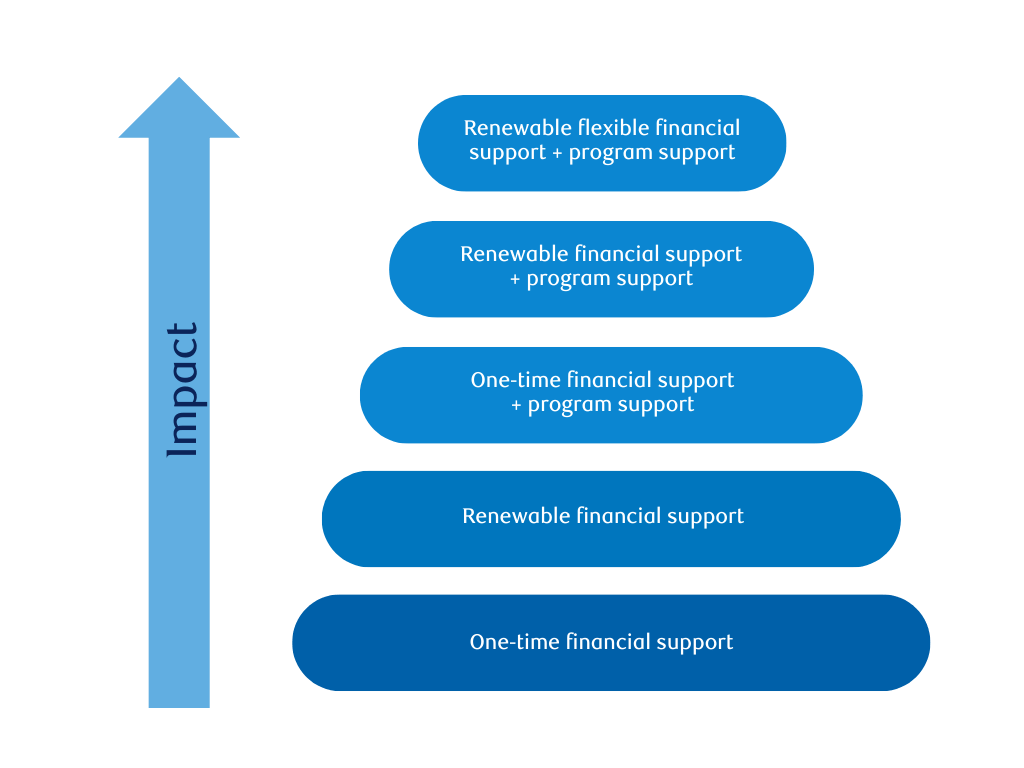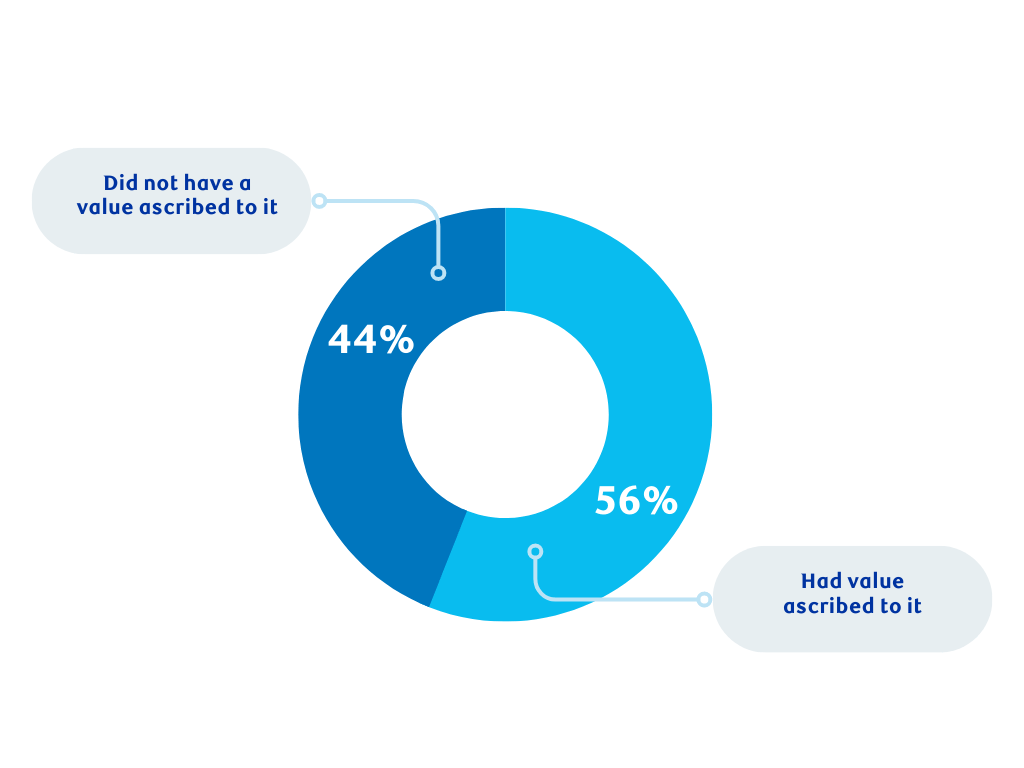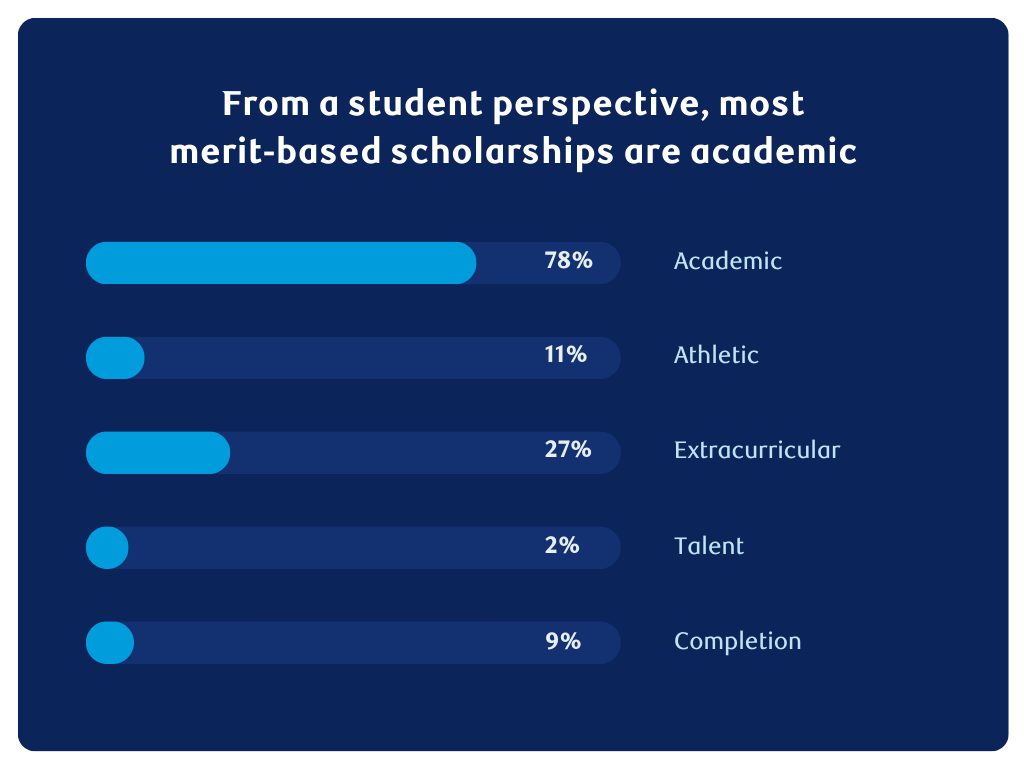Research & Insights
Untapped Potential: Working Together to Open Doors to Opportunity Through Scholarships


Why we wrote this
For students seeking post-secondary education, the excitement felt when their acceptance letters arrive can often be overshadowed by other concerns. How will I pay for this? Where can I find help? Do I live at home or on campus? Can I even afford to go to school?
Scholarships can provide essential support to students by addressing barriers and opening doors of opportunity, preparing them for school and the rapidly changing future of work. But the scholarship landscape in Canada is fragmented, with no central, up-to-date information about what scholarships are available and who can access them.
That is why we are pleased to present Untapped Potential, research that explores the landscape of scholarships in Canada and opportunities for scholarship providers, post-secondary institutions, government, youth-serving organizations and individuals to better serve students as they transition out of high school and eventually into the job market.
Through this report, we sought to understand what was working well and where improvements could be made — not just for RBC’s offerings, but also for scholarships across Canada. The research and solution areas provided here will guide RBC Future Launch moving forward, and we hope that others who support youth during the challenging transition from high school to post-secondary education and into the labour market will join us in taking the actions outlined in this report. We know that prosperity for all Canadians is directly linked to our ability to prepare young people to succeed, and that addressing barriers for equity-deserving youth through scholarships is a key piece of that puzzle.
Scholarships, bursaries and awards can be instrumental in helping young people finance their post-secondary education. And yet, in Canada, we have little knowledge of the collective impact of scholarships1 and the roles they play.
We know a post-secondary credential increases an individual’s earning potential in the long run and is good for our economy. However, certain groups of young people consistently face barriers accessing these funds and are underrepresented in higher education.
We need to ensure all young people can pursue post-secondary education, that they have the means to finance it, and can more easily transition to the job market. While scholarships can’t solve this problem in isolation, they could play a larger and more impactful role, ensuring all young people have the support they need in accessing post-secondary education and transitioning to the labour market.
What we wanted to understand
One under-explored tool in creating paths to opportunity are scholarships. How can scholarships better support these pathways and in turn, foster a stronger future workforce? This is what we endeavoured to answer through a year-long study on the scholarship ecosystem in Canada.
We wanted to understand:
-
-
What is the student2 experience in navigating, applying for and accessing scholarships?
-
How do scholarships support the student journey into and out of post-secondary education?
-
What solutions exist to make scholarships more accessible to underrepresented students on their path to post-secondary and into the job market?
-
What can institutions, scholarship providers, government, student-supporting organizations (the scholarship ecosystem) do to improve the creation, delivery and impact of scholarships — in particular for underrepresented students?
-
Canada can’t move forward as a globally competitive country without a skilled and inclusive workforce that welcomes and values youth. For this to happen, we need to build stronger and more coordinated launchpads to opportunity for all young people. This is both a social and an economic imperative, as Canada’s future prosperity depends on the skills and talents of youth. This means exploring different avenues for opportunities, from high school to post-secondary to the world of work.
This path underpins where and how the RBC Foundation invests in young people. Through RBC Future Launch, RBC has committed to providing $500 million to help Canadian youth access meaningful employment through work experience, skill-development opportunities, networking solutions, and mental well-being supports and services – including scholarships.
What we learned
The scholarship ecosystem is vast and complex. It’s difficult for young people to navigate and creates even more barriers for underrepresented students
We have a data problem in Canada. There is no single source to assess and understand the value and range of scholarships available, or what is accessible to students
The application process can be time-consuming, invasive and harmful. Young people are often asked to focus on hardships instead of their strengths, assets and aspirations for the future
Students, and their caregivers, have little or no guidance on how a scholarship may impact their government student financial aid (i.e., it may be clawed back). They also are unaware of how much money is available through the scholarships they may apply to
The award or scholarship criteria is often narrow. We need to reimagine how we assess merit and reflect upon who is included and who is left behind
Scholarships are about more than financial support. The confidence boost that students feel by knowing someone believes in them, along with non-financial supports (i.e., mentorship, system guidance, networking) can have a positive and lasting impact
Promising practices need to be celebrated, amplified and replicated. A growing number of scholarship programs in Canada are taking a more holistic approach beyond financial support, but more providers need to do the same
Key findings
Scholarships, bursaries and awards represent millions of dollars of financial support provided through post-secondary institutions, and other non-governmental actors such as scholarship providers and community service providers. Though scholarships are about more than just financial support. The confidence boost that students feel by knowing someone believes in them, along with non-financial supports (i.e., mentorship, system guidance, networking) can have a positive and lasting impact. A growing number of scholarship programs in Canada are taking a more holistic approach beyond financial support, but more providers need to do the same. Figure 1 below shows a theoretical hierarchy of the support provided by scholarships from least to most comprehensive.
Figure 1: Flexibility, programming and length of time can increase the impact of scholarships

However, the scholarship ecosystem is vast and complex. It’s difficult for young people to navigate and it creates even more barriers for under-represented students. There is no single source to assess and understand the value and range of scholarships available, or what is accessible to students. Students, and their caregivers, have little or no guidance on how a scholarship may impact their government student financial aid (i.e., it may be clawed back). They also are unaware of how much money is available through the scholarships they may apply to. Figure 2 looks at the landscape of scholarships through a student’s eyes. Almost half (44%) of scholarship listings in our two reviews had no value assigned to them. If students don’t know the amount available to them it makes it difficult to plan and budget or to understand if it’s even worth applying.
Figure 2: Nearly half of scholarships don’t communicate how much funding is available.


Canadian scholarships are also often missing the mark on merit. The award or scholarship criteria is often narrow. The stringent criteria for viewing merit through the lens of grades and sometimes extra-curricular participation has meant that only a narrow slice of talented youth are viewed as “worthy” of scholarships. In addition, the application process can be time-consuming, invasive and harmful. Young people are often asked to focus on hardships instead of their strengths, assets, and aspirations for the future. We need to reimagine how we assess merit and reflect upon who is included and who is left behind. In Figure 3, reviews of scholarships from the perspective of a student noted that the vast majority of scholarships were academic or extra-curricular.
Figure 3: From a student perspective, most merit-based scholarships are academic (based on merit and merit-financial need hybrids)

Join us in taking action
Canada has robust and world-leading public systems of post-secondary education. These systems and their students require growing, sustained, and coordinated government investment to thrive, along with the philanthropic initiatives that also play a role in contributing to a thriving post-secondary education sector. These investments are not only required for the well-being and success of individual students, but for the well-being and success of all of Canada.
Funded by multiple public and private sources, scholarships can and do support students who face obstacles in their path to success — though in their current state that impact is limited at a systems-level. By scaling promising practices and reconsidering how awards work together, interacting with government student financial aid and support programs, there is an opportunity to make a big difference. Taken collectively, the scholarship ecosystem matters to the future of youth in Canada and to our economy.
We need to take collective action to ensure scholarships are as effective as possible.
We have identified solution areas in this report and call on post-secondary education stakeholders to reflect on how they can contribute to change. As a collective, we need to work together to:
Acknowledge and better recognize student perspectives and barriers when designing and delivering scholarships.
-
-
Rethink how we assess and understand merit throughout the entire scholarship process and implement best practices for assessment based on a holistic definition that values the merit of under-represented students
-
Refocus automatic entrance scholarships at post-secondary institutions to factor in need and unique barriers
-
Seek to integrate non-financial and programmatic support into scholarship programs — such as matching students with mentors, helping them navigate the post-secondary transition, and providing them with access to a peer support network
-
Consider expanding eligibility for work-related programs, such as micro-credentials, work-integrated learning, and other industry training opportunities
-
Improve transparency and clarity for young people navigating the scholarship ecosystem.
-
-
Provide information and supports on scholarships earlier in the student journey, well before grade 12
-
Equip young people with better tools, resources and guidance on how to navigate and apply for scholarships/financial support
-
Continue to build more inclusive practices. Expand scholarships to young people who are consistently under-represented in post-secondary education. Scholarship providers should:
-
-
Undertake an equity audit of the application process, examining their review and assessment process, taking into consideration unconscious bias and potential roadblocks; and consider anti-bias training for staff and reviewers
-
Collect better and more accessible data on the value, use and application of scholarships and who receives them
-
Celebrate student strengths and utilize an asset-based framework in scholarship criteria and the overall application process
-
Maximize the collective impact of scholarships and create more opportunities for collaboration and learning between providers.
-
-
Expand and strengthen existing networks of Canadian scholarship providers through dedicated operational support
-
Evaluate the impact of their scholarships and collect more data around distribution, uptake and application rates of scholarships — and consider how to centralize and share this data as a sector
-
Work together to provide young people, and service providers, with a one-stop shop on available scholarships – maintained with current and consistent data on value, duration and the application process
-
Make the criteria for student financial aid clawbacks of scholarships more transparent and assess their intention and design
-
As a funder of organizations who support youth and as a scholarship provider, RBC Future Launch commits to implementing the calls to action in this report in the near and long term and to sharing the findings and recommendations with key post-secondary education stakeholders including other scholarship providers, youth-serving organizations, post-secondary institutions, career counselors/educators, and government actors.
But we cannot do this alone. We all have a stake in empowering the youth of today for the jobs of tomorrow. Scholarship providers, post-secondary institutions, governments, youth-serving organizations and individuals need to take collective action to ensure scholarships, bursaries and awards are as effective as possible.
Scholarships can be much more instrumental in helping young people finance their post-secondary education and support their growing needs. This report can serve as a clarion call for all of us to uncover the untapped potential of scholarships to better support our youth. Together, we can make a difference for all young people through scholarships.
Help open doors for young people through scholarships
Contribute to their social and economic outcomes and help Canada prosper.
In this report, the primary focus is on scholarships, and the term ‘scholarships’ is used to denote scholarships, bursaries, and awards unless otherwise noted.
For this study, we focused on the undergraduate domestic student experience.
A collaboration with CultureFoundry Studios and Medow Consulting
Share This Article
Related Resources
